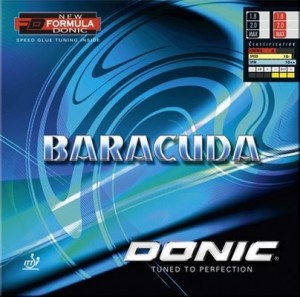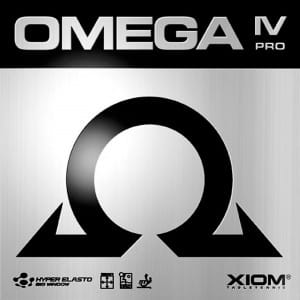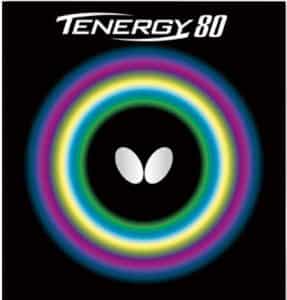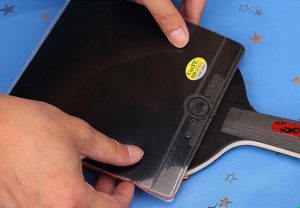If you are starting in table tennis, you’ll probably hear a lot of advice about the type of
I’m just a lowly blog written by a lowly guy who enjoys a bit of table tennis every once awhile I can’t actually watch you play. I can’t glue different types of
… but you can!
Some shops will let you try different types of
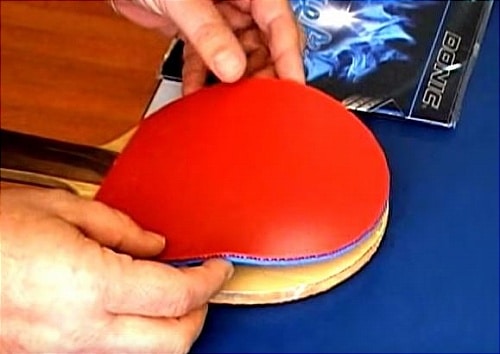
Another thing you can do is get a bunch of your teammates or club members, together and buy a bunch of different types of
Trying out different types of
How to Choose Sponge Thickness for Table Tennis Rubber
One could argue that the thickness of the sponge under the
Simply put, a thicker sponge makes the ball bounce off the racket more, while a thinner sponge provides less spring.
Some people say that with a thicker sponge, the ball can sink a little deeper into the
However, in my experience (and this could be related to my playing style), I like how a thinner
As I said above, some people think a thicker sponge will give you more of a chance to get the surface area from the racket onto the ball, but in my experience, slowing down the ball with a thinner
In my personal experience, I feel I can get more spin on the ball with a thinner sponge, but like to vary the type of table tennis
As with anything else, it all comes down to your playing style, level, control, and preferences. If you want to send it back with the backhand, but have a little more touch with your forehand (I’m still working on my backhand control), you should experiment with different pip lengths and sponge thicknesses for the right balance of power, bounce, and control for you.
Rubber Sponge Advice
I’ll quickly give you some background info. I know VERY little about ping pong equipment and ping pong lingo, but I’m not a beginner in terms of playing. I’ve played for fun pretty much my entire life, and while I lived in China (7 years), I played almost daily. So, I’m a recreational player and I’m certainly not THAT good, but I’m not a beginner either.
I already have a blade for many years and I like it a lot (it’s a gift from a good friend and I want to continue using it). It’s a “Butterfly TAKSIM Acrylate-CARBON.” What I need is some new
I play “pen-style” using both sides of the pad (like Ma Lin plays). I THINK that I’m an aggressive player (perhaps I’m an all-round player, but I’m certainly not defensive). I like to stand relatively close to the table (but not “hang” over it) and hit the ball with “topspin” on both forehand and backhand (I do not do “loops”). I seldom use “fancy” spins. I “cut” or use “backspin” on my forehand (if I can’t attack) but seldom on the backhand side of the pad (on the backhand I would only do this over the table or if the ball is far out on my backhand).
If I need to “cut” on the backhand side and it’s not over the table or very far out on the left (I’m right-handed), I’d normally try to use the forehand side of the pad (I can do this since I play “pen-style”). On my backhand, I usually try attack (or “semi-attack”) with a lot of “topspin”.
I realize that this description of the terminology I’m using is super ridiculous, but I hope that you can at least imagine (roughly) how I play. I have got some good suggestions for
My Pen-Style
Since I am playing with penhold and am close to the table with little spin imparted one would probably be better in the harder sponge area with a counter hit style. The spin element and “off” the table is relative to softer sponges and
When I think of a specific
By the way, after having getting advice from one of my friends, I realize that I do “loops” although not with a crazy amount of topspin (I thought “loops” referred to something else when I wrote my first post).
I’m especially interested in Chinese rubbers since I travel there very often. I currently have R.I.T.C. Friendship 729 on both sides (that’s all it says on them). They are perfectly fine but I don’t know if these rubbers are ideal for my style of playing and the pad I’m using (Butterfly TAKSIM Acrylate-CARBON).
Great Control
The Friendship rubbers are very respectful – They offer very good control and great spin with average speed ( not as fast as the Japanese rubbers normally ). It all very much depends on your style and the sponge thickness you have. 2mm is ideal for offensive play, 1.5mm for all-round/defensive.
I showed my friend the playing style of mine on forehand/backhand capabilities and general style ( positives & negatives ), they did give me very constructive advice.
I first want to go with the 729 Friendship but it is very hard to find two sheets that are the same. I then try the new “729 FX Supersponge”. It is a softer, more advanced version of the original Friendship.
My friend told me that if you are looking for a hard sponge, you will find that the weight will become an issue with Chinese rubbers. If you want a harder sponge then the ‘God Favored’ versions from Friendship are good traditional Chinese style tacky rubbers with the SP version having the best top sheet.
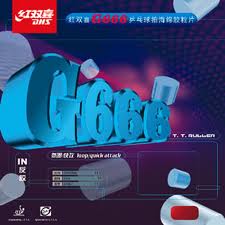
Personally, I would prefer something like DHS G666 which has a medium hardness sponge but is still quite tacky. For those who want to try something non-Tacky, I would suggest Sword RG is a good quality spinny
Well, know my final decision. I ended up going for DHS G66 which I think is the best suit my needs.
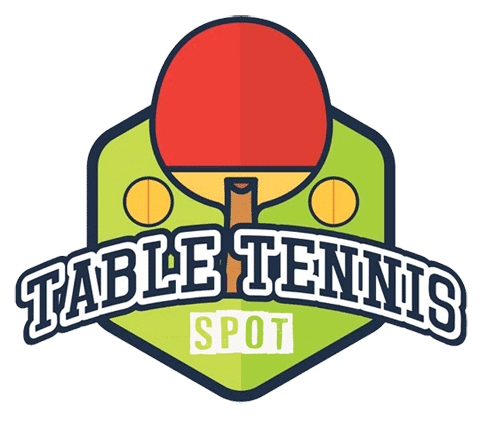
Warren Davies

